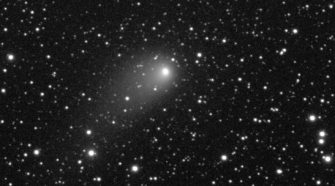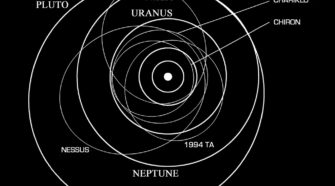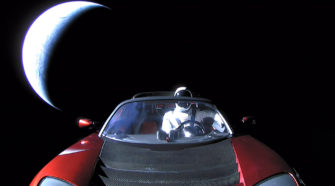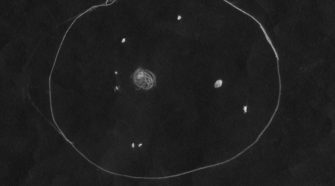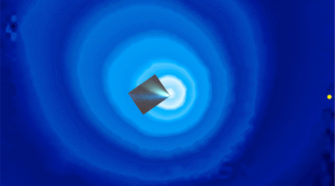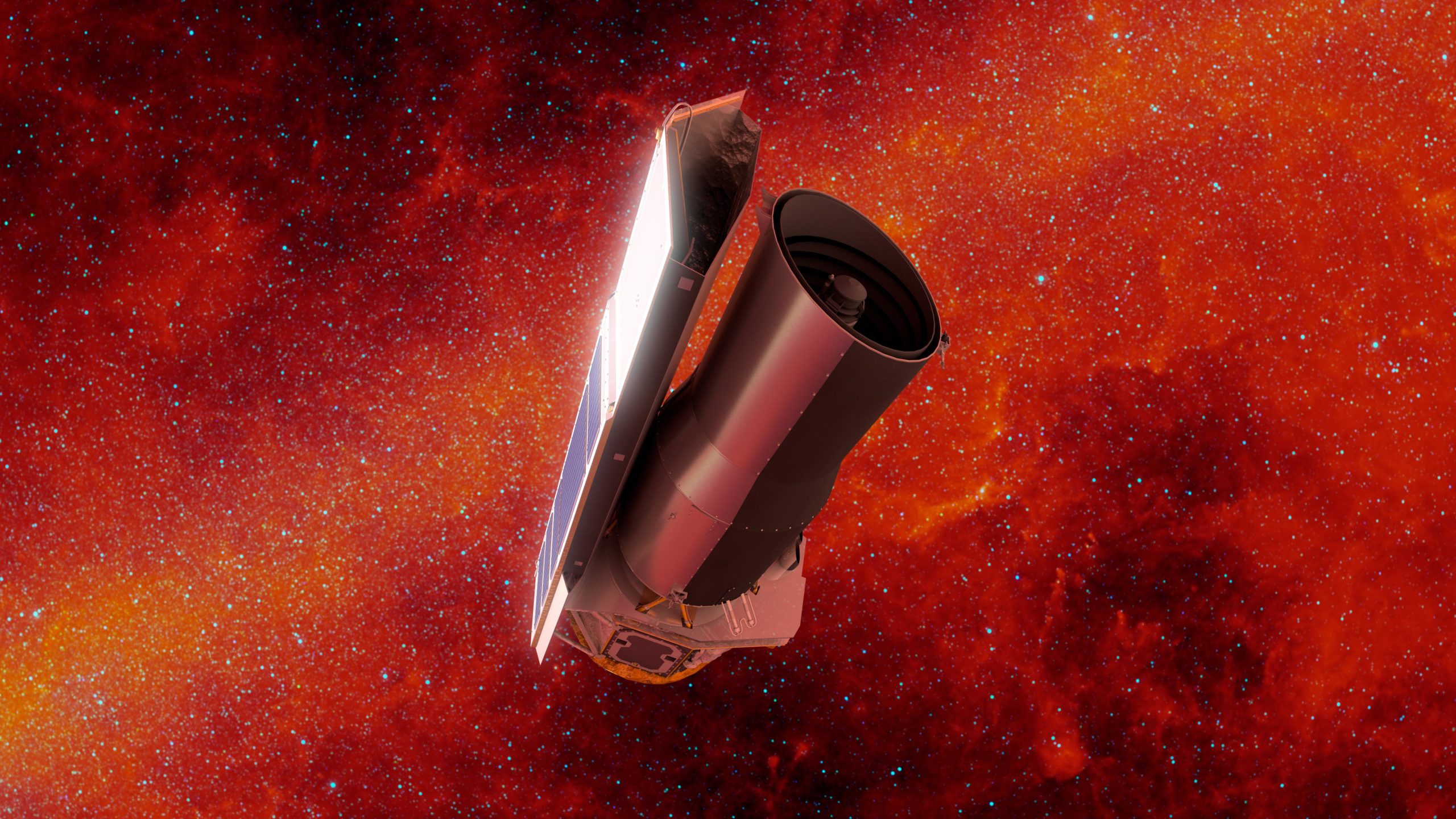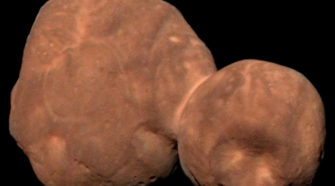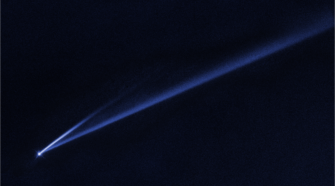Comet of the Week: PANSTARRS C/2017 T2
Perihelion: 2020 May 4.95, q = 1.615 AU After devoting my “Comet of the Week” last week to the first comet I ever observed, it seems appropriate to devote this week’s “Comet of the Week” to the brightest comet that is currently visible in our nighttime skies, and which is easily accessible for observations, at …
Special Topic: Centaurs
In previous “Special Topics” presentations I have focused on asteroid populations in the “main asteroid belt” between Mars and Jupiter, and on asteroids in near-Earth space. If, however, as is now widely believed to be the case, asteroids are among the “leftovers” of the planet formation process, we would accordingly expect asteroids to exist in …
This Week in History: February 2-8
FEBRUARY 2, 1106: Sky-watchers around the world see a brilliant comet during the daytime hours. In subsequent days it becomes visible in the evening sky, initially very bright with an extremely long tail, and although it faded rapidly it remained visible until mid-March. The available information is not enough to allow a valid orbit calculation, but …
Comet of the Week: Tago-Sato-Kosaka 1969g
Perihelion: 1969 December 21.27, q = 0.473 AU Everyone fondly remembers their “first.” When it comes to comets, my “first” came exactly 50 years ago on Monday evening, February 2, 1970, when I was 11 years old and in the 6th Grade, and involved a 5th-magnitude fuzzball located close to the 2nd-magnitude star Hamal in …
Special Topic: Comet observations from space
All astronomers, be they professional or amateur, or even just casual sky-watchers, have often had to contend with the vagaries of the earth’s atmosphere. Clouds will often get in the way, especially at inopportune times; almost every astronomer can recite stories of important observations that were precluded by cloudy weather. Even if the skies are …
This Week in History: January 26-February 1
JANUARY 26, 1978: The International Ultraviolet Explorer (IUE) spacecraft is launched from Cape Canaveral, Florida. Throughout its 18 years of operations IUE conducted observations of many astronomical objects, including several comets. JANUARY 27, 2016: A team of astronomers led by Tabitha Boyajian of Yale University publishes their paper on the star KIC 8462852 – unofficially …
Comet of the Week: The Daylight Comet of 1910
Perihelion: 1910 January 17.59, q = 0.129 AU In early 1910 the entire world – astronomers and lay public alike – awaited the imminent return of Comet 1P/Halley, which had been recovered the previous September and which was already detectable with moderate-sized telescopes. While Halley would go on to put on a spectacular display around …
Special Topic: Exocomets
It is now generally accepted that the planets in our solar system formed via the accumulation of smaller bodies dubbed “planetesimals” – which in turn formed from the accumulation of dust grains and (in the outer and thus colder regions) gas molecules – early in its history. Due to the early sun’s rotation the infalling …
This Week in History: January 19-25
JANUARY 19, 2006: NASA’s New Horizons mission is launched from Cape Canaveral, Florida. After a somewhat distant flyby of the main-belt asteroid (132524) APL in June 2006 and a gravity-assist encounter with Jupiter in February 2007, New Horizons encountered Pluto and its system of moons in July 2015 – providing our first detailed view of …
Comet of the Week: (6478) Gault
Perihelion: 2020 January 2.79, q = 1.859 AU It has been obvious for several decades that the dividing line between “comets” and “asteroids” is, in a word, nebulous, and some facets of this will be explored in future “Special Topics” presentations. One group of objects that are included within this discussion were initially referred to …

